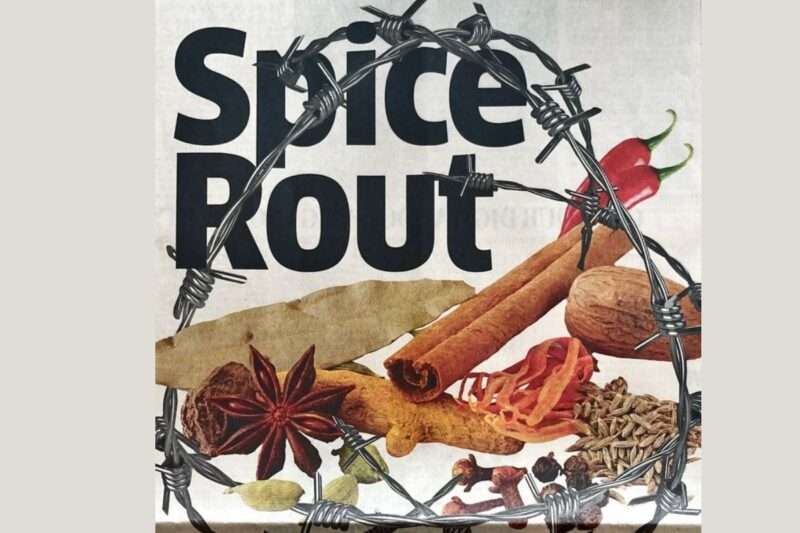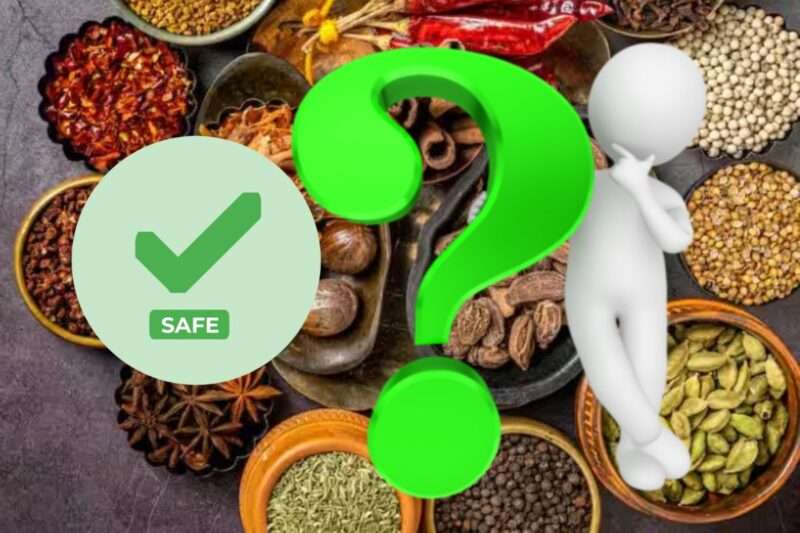Indian Spice: What Was Once A Sign Of India’s Culinary Pride Is Now A Reflection Of The Country’s Lethargic Laws, All Thanks To Indian Regulatory Agencies!

If you are someone who is responsible for what food you and your family consume, then the banning of MDH and Everest’s products in foreign countries is no unknown to you. Sugar in baby food. Sugar in malt-based drinks (targeted mainly at kids). Pesticide in spices. The ultimate anger on your mind may be why India can’t keep its food safe and what the regulators have been doing for so many years.
Why does it take for an international entity to raise their voice for the country, and what are the people who are actually placed to check the quality of foods in India, keep optimum standards, and do regular inspections doing? Are they sleeping lethargically for so many years despite being given good salaries to run the regulatory body?
Many countries are joining the bandwagon of checking Indian spices.Indian spice firms are feeling the heat on the worldwide market.
The first domino to fall was the suspension of the sale of three MDH spice blends (Madras curry powder, Sambhar masala and curry powder masala) as well as Everest fish curry masala on 5 April by Hong Kong‘s Centre for Food Safety. The agency noted that the spice blends had excessive concentrations of ethylene oxide and recommended against buying these goods. A few days later, Singapore issued an order to recall the Everest spice mix, claiming that the pesticide “ethylene oxide is not approved for use in food” and that prolonged exposure to the spice might cause cancer.
The United States and Australia have been investigating contamination after Hong Kong halted sales of three MDH spice mixes and one Everest blend last month, citing excessive amounts of ethylene oxide, a cancer-causing pesticide.
Admidst of diplomatic tensions with India, the Maldives has gone so far as to restrict the sale of Everest and MDH goods.
The latest, New Zealand‘s food safety agency said on Wednesday that it is looking into suspected contamination in spice goods from top Indian firms MDH and Everest, which have attracted attention in other countries.
History of rejections.
The United States, a significant importer, has increased inspections and rejected a number of Indian spice shipments owing to salmonella contamination. Since MDH has been the subject of allegations of contamination, rejection in the US is not a recent development. A Reuters article claims that MDH has been having shipment rejections since 2021 because of bacteria found in its spices. Almost 14.5 per cent of MDH imports to the United States have been denied because they reportedly included salmonella, a bacteria that causes gastrointestinal sickness.

According to the most recent statistics available from the US Food and Drug Administration (FDA), about 20%, or 13 of MDH’s 65 shipments to the United States, were rejected due to salmonella contamination between October 2023 (the start of the current fiscal year) and May 3. The US FDA data, however, does not disclose the quantity that was rejected in each shipment; nonetheless, the 13 rejected shipments contained mixed spices and seasonings, as well as fenugreek. Meanwhile, between 2022-23, around 15% of 119 MDH shipments were rejected, primarily due to the presence of salmonella, compared to 8.19% in 2021-22, according to the statistics.
In fact, the FDA initiated a recall of MDH’s Sambhar Masala in the United States in September 2019 after discovering Salmonella contamination. The recall ended in December 2021. Another recall occurred in June of last year, involving Everest’s Garam Masala and Sambhar Masala, as well as Maggi’s Masala-ae-Magic. Other than being Salmonella-contaminated.
The United States Department of Agriculture reported in February 2022 that India and Mexico were the leading sources of pathogen-based food import refusals. Their investigation, which covered the evaluation period 2002-19, found that Indian imports had the highest frequency of pathogen breaches. With 5,115 refusals, this number represented 22.9% of total import refusals for pathogen/toxin breaches.
According to media reports, using Rapid Alert System for Food and Feed (RASFF) data, the European Union’s food safety officials discovered contamination in 527 products with Indian origins between September 2020 and April 2024. Excess ETO traces might be due to the use of non-approved pesticides or processing processes designed to decrease microbial contamination. They were “found to lead to unapproved residues and unsanitary processing procedures (e.g., ethylene oxide in guar gum and curry powder from India)”.
What are the health concerns?
MDH and Everest’s spice blends purportedly contain significant quantities of ethylene oxide (ETO), a banned pesticide. ETO is a colourless, combustible, and in many ways fascinating gas that was initially used to sterilise medical instruments. It is employed as a chemical in industry, agriculture, and as a sterilising agent in food goods such as spices, dried vegetables, and other commodities. The chemical revitalises the spice sector by reducing microbial contamination, extending product shelf life and improving storage safety.
This procedure is not always foolproof. Improper and excessive usage of ETO may leave residues, causing hazardous and even carcinogenic chemicals to develop, polluting the final product. One such substance is ethylene glycol, which is present in cough syrups prepared in India and has been connected to the deaths of over 300 children in Cameroon, Gambia, Indonesia, and Uzbekistan. Some data suggests that long-term exposure to ethylene oxide is connected with malignancies such as lymphoma and leukaemia.

How India responded.
The Spices Board, which is responsible for developing, marketing, and regulating the export of spices and spice products, reports to the Ministry of Commerce and Industry. On April 25, it announced a number of remedial steps, including required testing of consignments exported to Singapore and Hong Kong, as well as obtaining technical information and analytical reports from relevant food and drug organisations. Also, they are reportedly working with exporters whose consignments have been recalled to identify the main cause and “propose remedial steps.” “Thorough checks at exporting plants are also underway to guarantee compliance with regulatory standards,” they added.
A circular dated April 30 provides advice for exporters to prevent ETO contamination, written following comprehensive consultations with the Indian spice sector. Measures include voluntary testing of ETO throughout raw and final stages, storing ETO-treated goods separately, and “identifying ETO as a danger and including crucial control points in hazard analysis.” Exporters are also urged to utilise “alternative procedures” such as steam sterilisation or irradiation. The Spices Board issued a similar advice in September 2021 after the EU detected ETO in spices exported from India.
Is it just materialistic damage, or does it have a reputational angle, too?
The Spices Board’s comprehensive guidelines, which advise exporters to recognise ethylene oxide (ETO) as a concern and verify its absence from spice goods, are an excellent move. However, the activity appears to be insufficient and delayed. The Spices Board, India’s spice export regulator, might have taken more decisive action to prevent reputational harm.
The public’s concern about safety standards has spread into domestic markets. More than seven in ten Indians are concerned about the quality and safety of the spices they consume, according to a recent Local Circles poll of 12,300 individuals in 293 districts. Almost 36% said they had “no trust” in the FSSAI’s ability or desire to carry out its mandate.
The FSSAI has instructed state authorities to collect samples from major spice brands such as MDH and Everest to test for ETO. According to a Union Health Ministry statement, the organisation intends to conduct national monitoring in 2024-25 for “fruit and vegetables, salmonella in fish products, spice and culinary herbs, fortified rice, and milk and milk products.” The samples studied thus far do not provide a promising image. In the previous three years, over one-fourth of tested samples breached regulatory criteria, according to the FSSAI’s most recent publication. The body reportedly analysed over four lakh samples this fiscal year, but the final data is still being collected.
Activists have urged for stricter safety inspections on curry powders and spices, the detection and control of ETO in food items, and the effective execution of regulatory standards. A recent CUTS research also advocated for frequent updates to food safety standards to match with worldwide norms, as well as improved information flow to food sectors to help them comply with rules.
What does the event reveal about food safety in India?
Despite existing food rules, recent events “together highlight the recurring nature of food safety concerns across all sectors of the food business.”

One operational problem is that India’s diversified food environment, a lack of standardised recordkeeping, and purposeful food fraud may make it difficult for producers to trace components and analyse possible dangers effectively. Other difficulties are operational. “Many businesses fail to trace components, particularly raw agricultural commodities, due to a lack of regular documentation and deliberate food fraud. This inhibits producers from identifying possible dangers, jeopardising the complete safety of the food supply chain. Small and medium-sized firms with limited resources have unique challenges in tracing transactions.
Some are logistical obstacles. According to the FSS Act, at least ten states/union territories lack government or commercial registered food testing labs. These labs are unevenly spread across regions, have an insufficient number of food safety officials, and were deemed to operate ineffectively owing to resource restrictions, according to the FSSAI Annual Report for 2021-22.
According to experts, the lack of responsibility and penalties frequently leads to enforcement authorities failing to sanction dishonest food businesses, which exacerbates the problem. The highest penalty for substandard samples is ₹5 lakh. Under Section 59 of the FSS Act, food firms that sell, store, or manufacture sub-standard goods may face a ₹3 lakh penalty and a three-month prison sentence.
The FSSAI’s operations frequently lack openness, which “hinders attempts to satisfy safety requirements” and fosters responsibility and confidence. Two years ago, the agency performed another pan-India spice test, but the findings were never made public. Surveys that identified contamination in items such as milk and jaggery “have not resulted in a favourable response to the widespread practice of adulteration.” Improper supervision is also a concern. When authorities raided two facilities in Delhi recently, they uncovered fake spices “made with decaying leaves and rice, damaged millets, wood dust, chilli heads, acids and inferior oils,”.
The ultimate question arises: what have the regulators been doing for so many years?
This is not a single instance. Controversies have enveloped protein drinks, fruit juices, health drinks, and imported Nestle infant goods, highlighting regulatory flaws and raising health concerns. “Consumers are increasingly doubting the safety and quality of established brands and ask what India’s food regulator is doing.
How is this spice industry beneficial to India?
India is the largest exporter and consumer of spices. It is known as the world’s spice bowl and cultivates over 75 spices. The country’s spice exports totalled $4.25 billion in fiscal year 23-24. Major spices exported from India include chilli powder, cumin, turmeric, “curry powder and paste,” cardamom, pepper, coriander, and nutmeg.
A report published earlier by the Delhi-based think tank Global Trade Research Initiative (GTRI) estimated that the recent dispute could affect spice exports worth $700 million, adding that transparency, stringent enforcement, and clear communication are critical “to maintain the integrity of its exports and domestic products alike.” “With such high-value exports to vital markets at issue, and possible losses of more than half of India’s total spice exports owing to cascading regulatory measures in numerous countries, the integrity and future of India’s spice trade are in delicate balance.”
GTRI also predicted that if Chinese regulators followed Hong Kong’s lead, Indian exports would see a “severe decline.” This might have an impact on exports worth $2.17 billion, which account for 51.1% of the country’s global spice exports. The scenario might worsen if the European Union, which claims to “often rejects Indian spice consignments over quality difficulties,” follows suit. The impact might be another $2.5 billion, increasing the total possible loss to 58.8% of world exports.
According to Jayant Dasgupta, former Indian ambassador WTO, the European Union, which is recognised for its high standards, should have taken note of the disagreement by now. They may hear from the bloc soon, adding that if the EU discovers an irregularity in an agricultural product, it would destroy the afflicted shipment rather than return it, citing specific WTO laws.
In fiscal year 2022-23, the top three importers of India’s curry powders and mixtures are the United States (₹196.2 crore), the United Arab Emirates (₹170.6 crore), and the United Kingdom (₹124.9 crore), followed by Saudi Arabia, Australia, Bangladesh, Oman, Canada, Qatar, and Nigeria, according to provisional data from the Indian Spices Board. Overall, China, the United States, the United Arab Emirates, Bangladesh, and Thailand are the leading importers of spices and spice blends from India.
Is it just a regulation problem or the impact goes beyond that, to other segments of the supply chain too?
The possible credibility problem might lead to losses for masala manufacturers, both small and large. According to Vijoo Krishnan, General Secretary of the All-India Kisan Sabha, the chain of events might cast doubt on the exports of other small firms or cooperatives.
Importantly, Mr Krishnan emphasised that in the case of probable losses, farmers of such commodities may also bear the consequences. They have cases when firms have not paid adequate rates to farmers even when they were profitable,” he observed, adding, “Should the companies lose money today, it might be used as an excuse to decrease prices, burdening the farmer.”
What needs to be done to regain trust in domestic and international markets?

The spice route to India is a few millennia old. The Romans made expeditions to India mostly for spices. According to Britannica, under the Romans, Alexandria became the world’s biggest economic city and “the major mart for the fragrant and pungent spices of India.” If that tradition is to survive, authorities must step in, and spice firms must clean up their act. Spices are a significant component of India’s culinary legacy as well as a contributor to the country’s economy; thus, recovering consumer trust both in India and abroad is critical.



